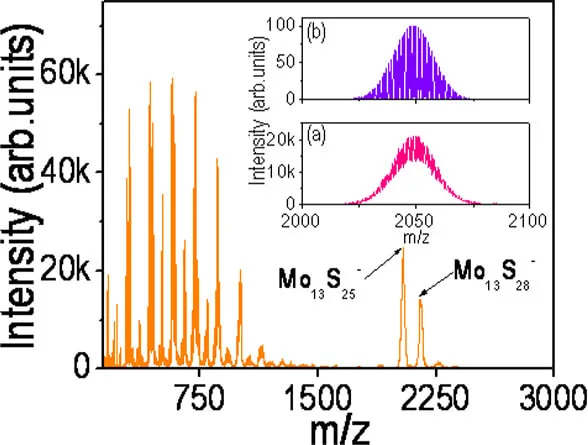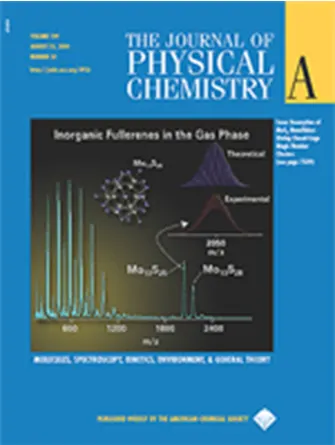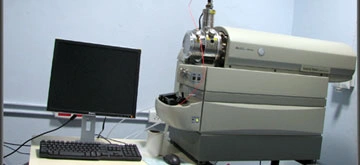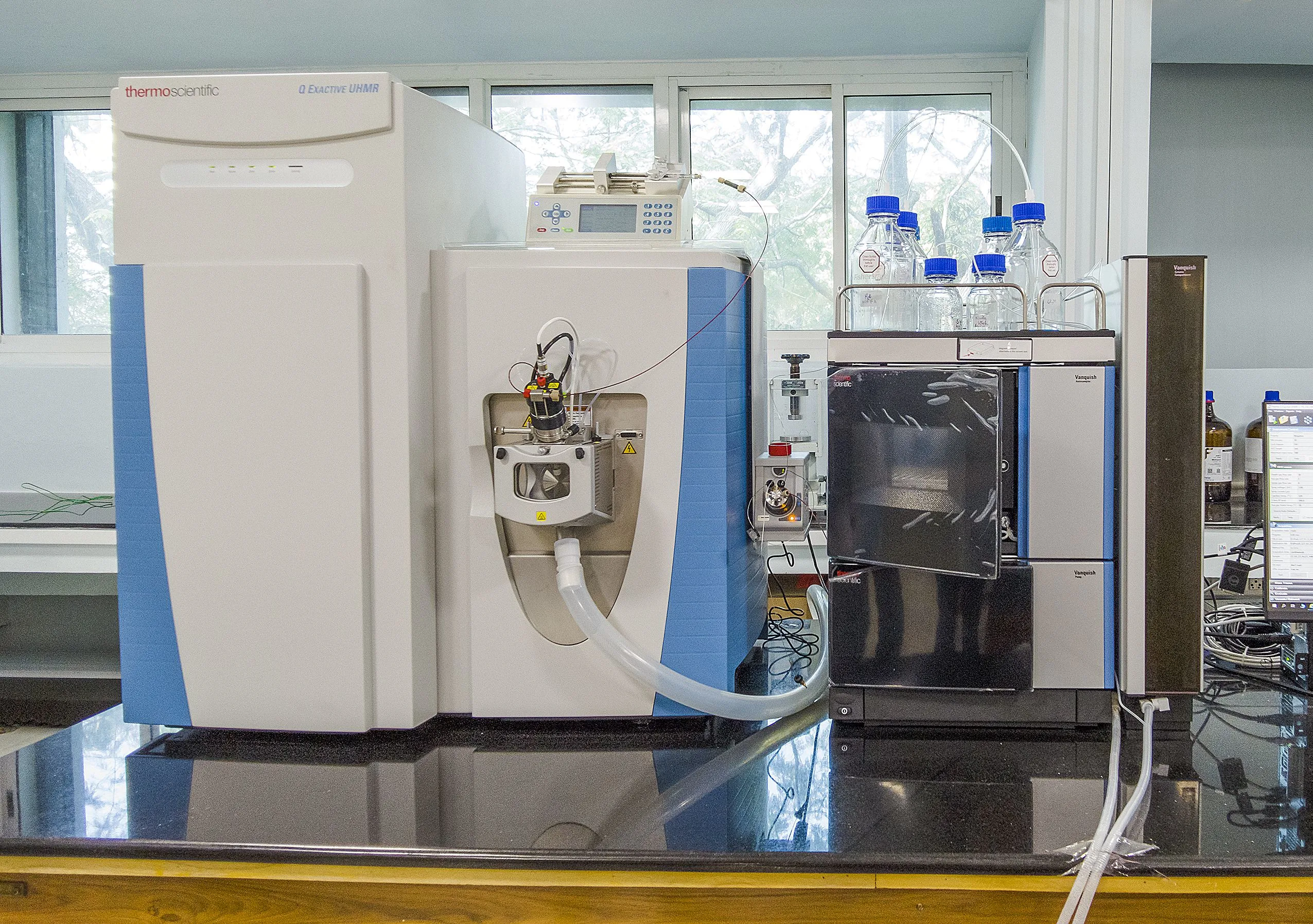Matrix Assisted Laser Desorption Time of Flight Mass Spectrometer(MALDI TOF MS)
Instrument specification:
MALDI technique is a soft ionization method used to study most of the biomolecules like proteins, DNA so on. Apart from bio molecules other organic and inorganic samples can also be analyzed. Here in our instrument MALDI was coupled with TOF technique. Here is the link to know more about MALDI and TOF technique.
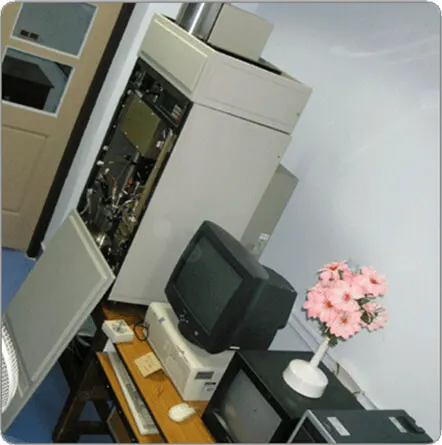
Instrument specification:
MALDI technique is a soft ionization method used to study most of the biomolecules like proteins, DNA so on. Apart from bio molecules other organic and inorganic samples can also be analyzed. Here in our instrument MALDI was coupled with TOF technique. Here is the link to know more about MALDI and TOF technique.
Our instrument equipped with
- 337 nm Nitrogen laser for desorption and ionization
- TOF having linear and reflectron mode of detection
- Delayed extraction of ions

Theory and how it works
The Voyager-DE™ PRO Biospectrometry™ Workstation is equipped with a reflecting ion mirror that boosts the resolution and mass accuracy over a large mass range. Post-source decay or PSD experiments are facilitated by the new Voyager Version 5 with Data Explorer™ software. Obtain even more structural information with the collision-induced dissociation (CID) option for enhanced fragmentation
Schematic of sample inside the sample compartment. LASER desorbing and ionizing the sample embedded on matrix. The ions are flying towards the detector through field free region.
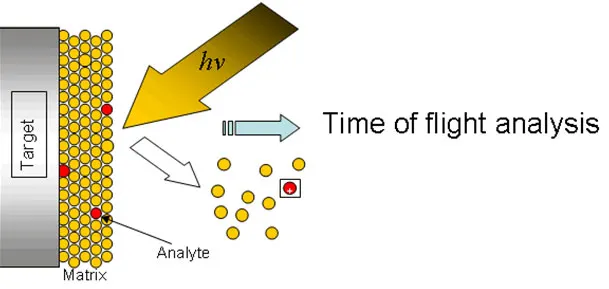
Block diagram of instrument.
Key Features:
- High-performance benchtop Matrix-Assisted Laser Desorption Ionization Time-of-Flight (MALDI- TOF) system for high quality data
- Powerful Voyager Version 5 Software with Data Explorer™ for flexible acquisition and data processing
- Reflectron provides high mass accuracy and post-source decay (PSD)
- Fully automated acquisition and processing of data provides needed throughput
- Integrated Microsoft® Visual Basic , for Applications (VBA) permits macro recording and customized processing routines
- Collision-induced dissociation (CID) provides more structural information
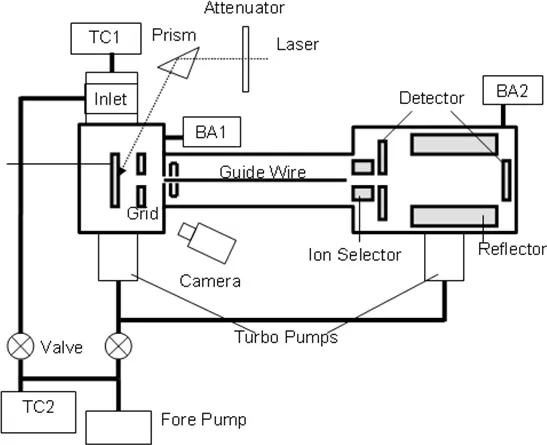
Results
